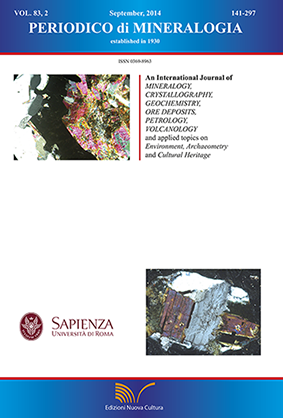Potentially toxic element contamination in waste rocks, soils and wild floraat the Roşia Montană mining area (Romania)
DOI:
https://doi.org/10.2451/2014PM0013Keywords:
PTE, metal-tolerant tree, Roşia Montană, gold mineAbstract
The relationship between waste rocks and trees growing on the Hop waste-rock dump from the Roşia Montană gold mine (Romania) and also on soils along Roşia river were investigated. Plant samples, consisting in leaves, branches and roots of Salix spp., Popolus tremula, Betula pendula, Pinus sylvestris species, and rhizospheric soils of the same species, were analyzed for Zn, Cu and As. Total element concentrations were determined by ICP-AES. Bioaccumulation Factor (BF) and Translocation Factor (TF) were also calculated for the plant data set. Hop waste-rock dump is a highly variable substrate, characterised by stressful conditions for plant growth such as acid pH values and strong As contamination (mean 80 mg kg-1), whereas Cu and Zn contents do not exceed European law limits for industrial sites. Data confirm that Salix spp., B. pendula and P. tremula are able to tolerate such limiting conditions, accumulating Cu and Zn, but excluding As.; conversely, P. sylvestris acts as a strong excluder species. PTEs were detected also in soils along Roşia river and in relative vegetation (Alnus glutinosa), where acid sulphate waters, with pH values as low as 3, continuously flow out from the main mine adit. Concentration of PTEs decreases progressively towards the point of confluence of Roşia river with the Abrud river. A. glutinosa acts as a strong excluder species. The results obtained can be the basis to direct further studies in this area where reforms and re-opening of mining are planned.


